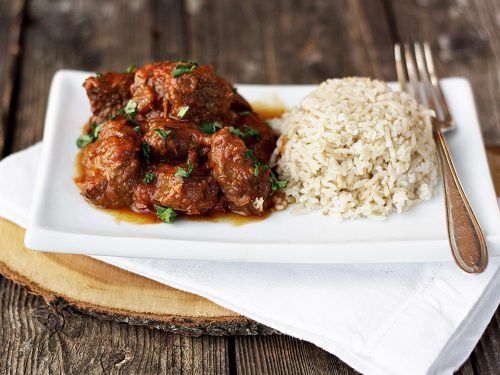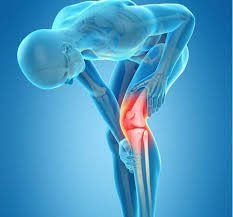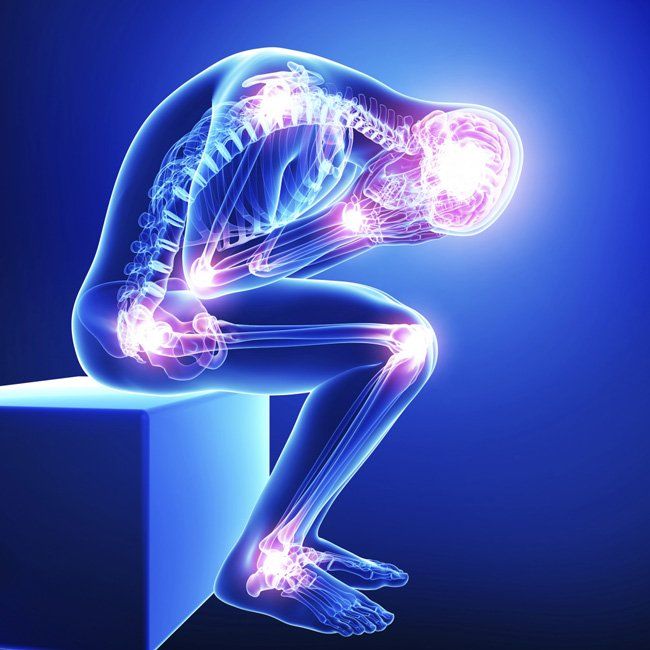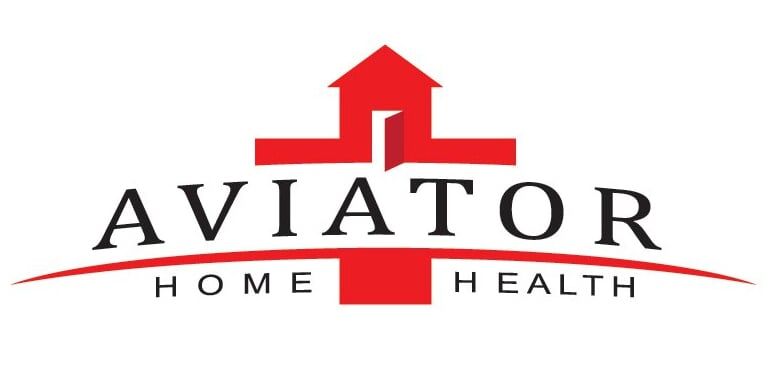
“Slap some ice on it, you’ll be alright!”
We all know the old adage of R.I.C.E as being the one and only acronym to aide with the recovery of an acute injury. While the concept of RICE (Rest, Ice, Compression, and Elevation) has made sense as the most popular protocol in the past, it is now being challenged and should not be the only tool in your professional bag.
Actually, R.I.C.E. may potentially slow the speed of recovery. While Rest may initially reduce aggravation or exacerbation of pain in the injured area, it will also limit movement and promote loss in range of motion. Ice is another element that can initially help reduce pain levels and edema but can actually hinder the recovery process as well. Ice constricts blood vessels which restricts blood flow and subsequently limits healing factors from reaching the affected area. Compression and Elevation can also limit the blood flow to the affected area. All of these factors may contribute to a slower healing time and slower return to activity.
Although the R.I.C.E. method has been widely used for a long time, the research has not been able to conclusively document its effectiveness. This does not completely invalidate the R.I.C.E. method however, there is another method demonstrating greater promise.
M.E.A.T. is the newest concept on the PT block.
M.E.A.T. stands for Movement, Exercise, Analgesia, and Treatment . Ligaments and tendons are known for having extra elasticity due to their collagen based roots, but both have a poor and more indirect blood supply. Through Movement we can increase circulation of blood and decrease the likelihood for scar tissue build up while also focusing on preserving and improving range of motion. Exercise, another major component of M.E.A.T., will help decrease the loss of muscle function, improve movement quality as well as increase range of motion. The A in M.E.A.T. is Analgesics and should not be confused with NSAIDs or narcotic medications. The analgesics I am referring to are typically topical creams, TENS(electrical stimulation) units, and even proteolytic enzymes/supplements. Analgesics reduce pain which allow for improved movement and exercise participation. The “T” is for Treatment. Evidence based treatment plans created by a trained professional can dramatically improve healing time and facilitate return to activity. Skilled clinicians can create home exercise programs and perform manual therapy techniques to aide with the recovery process, reducing your time on the couch.
“So what should we use?”
R.I.C.E and M.E.A.T are both tools to be placed in your toolbox for dealing with acute injury. We are seeing that the M.E.A.T. method may possibly demonstrate better overall outcomes however there is still a place for R.I.C.E. depending on the nature of the injury. Knowing and understanding these methods and that neither are currently the Gold Standard gives you options on how to address the injury. Seeking the assistance of a Physical Therapist can also be a key component in recovery and help you return to what you enjoy doing, faster.

What Is Peripheral Neuropathy?
The Mayo Clinic defines Peripheral Neuropathy, PN, as damage to peripheral nerves, causing weakness, numbness, and pain in the hands and/or feet, as well as, other areas of the body. The function of peripheral nerves is to send messages from your brain and spinal cord to your body.
Types of nerves affected:
- Sensory nerves that receive sensations like pain, temperature, vibration, and touch.
- Motor Nerves control muscle movement.
- Autonomic nerves that control body functions like blood pressure, heart rate, digestion, and bladder.
What are Some Causes of Peripheral Neuropathy?
The Foundation for Peripheral Neuropathy estimates than 30 million Americans suffer from PN. There are several main causes:
- 60-70% Diabetes
- 23% unknown
- 10% Chemo-induce
- 2% HIV/AIDS
- 5% other.
What are the Signs and Symptoms of Peripheral Neuropathy?
- Numbness/tingling in hands, feet, arms and legs
- Sharp, shooting, freezing or burning pain
- Sensitivity to touch
- Lack of coordination and falling
- Muscle weakness or paralysis
How can Aviator Home Health Help??
The Aviator clinical team can play a vital role in working with you to set up a personalized treatment plan for your specific needs and goals. With the collaborative approach of our therapists and nurses, we can help improve function and daily activities affected by PN. Our therapy team utilizes an evidence-based manual therapy/ corrective movement approach to improve:
- Balance/coordination to address fall risk
- Strength for return to functional activities
- Flexibility/mobility for improved muscle length and joint range of motion in order to allow for improved mechanics with movement
- the quality of your walking
- Aerobic conditioning to increase cardiovascular endurance
What does the Research say?
- 2006 study showed that a brisk walking program improved nerve conduction velocity and decreased incidence of motor and sensory PN.
- 2012 study states: “Evidence demonstrates that strength and balance training is safe and effective at reducing falls and improving lower extremity strength and balance in adults over 50 years of age, who are at high risk for falls, including persons with diabetic peripheral neuropathy”.
- Foundation for PN reports “Research has shown that strengthening exercises for PN moderately improves muscle strength in people with PN. Exercises to help PN done regularly may reduce neuropathic pain.”
- A 10-week supervised aerobic and resistance exercise program found significant improvement in measure pain, neuropathic symptoms with diabetic PN.
What Can You Do?
If Peripheral Neuropathy is something you struggle with, physical therapy can help. Aviator Home Health is ready with a team of highly trained clinicians that can assist you with getting back to the highest level of function possible, safely and effectively! Call us!
References
- Balducci S et al. Exercise training can modify the natural history of diabetic peripheral neuropathy. Journal of Diabetes and Its Complications. 2006
- Foundationforpn.org. 2016
- Kluding.P. et al. The Effects of EXERCISE on Neuropathic SYMPTOMS, Nerve Function, and Cutaneous Innervation in People with Diabetic Peripheral Neuropathy. 2013
- Tofthagen. C. et al. Strength and Balance Training for Adults with Peripheral Neuropathy and HIGH Risk Fall: Current Evidence and Implications for Future Research. 2012

The Two are Becoming One
As Western medical practice continues to evolve and change, we are seeing growing influence from ancient and holistic forms of healthcare. More and more, integrative and complementary Eastern medical therapies are working side by side with conventional Western medicine to provide a more well-rounded and holistic approach to treating disease and improving the quality of life. As these approaches to healthcare seek to understand one another and work together, an important aspect of that relationship is to create a common language between the two, a way to communicate ideas and create understanding for the benefit of the public.Providing a Shape to the Art
The ancient Eastern martial art of Tai Chi is quickly gaining popularity here in the West as a means of healing and exercise. The Western public is starting to hear more about Tai Chi through friends, social media outlets, publications in health/wellness journals and from their healthcare practitioners. Defining Tai Chi is quite a challenge, but we will attempt to provide clarity on what this practice is and shed some light on its long history. Tai Chi can be an effective complement to many therapies and can be a key intervention in promoting health and wellness.To truly explore and discuss the complexities of Tai Chi, its history and philosophy, is beyond the scope of this article. My desire here is to create some sense of shape to the idea of Tai Chi and eventually, our application of this therapy as rehabilitation professionals. According to Dr. Peter Wayne of Harvard University “Tai Chi is a mind-body exercise that is rooted in multiple Asian traditions, including martial arts, traditional Chinese medicine, and philosophy. Tai Chi training integrates slow and intentional movements with breathing and cognitive skills (mindfulness and imagery). Its aim is to strengthen, relax and integrate the physical mind and body, enhance the natural flow of Qi (pronounced “Chee”), and improve health, personal development and self defense.” The word Tai Chi is literally translated as “Supreme Ultimate” , “Grand Ultimate” or “ Grand Ultimate Fist” (if written as Tai Chi Chuan). You may see the word Tai Chi written in several forms depending on the translation, Tai Chi Chuan, t’ai Chi ch’uan, taijiquan, tai ji chuan, or tai ji quan.
A Little Back Story
Historically, Tai Chi training and development was passed along only within families directly.The history and the development of Tai Chi has evolved over thousands of years of Chinese culture, but the forms we currently see as Tai Chi have developed only in the last 200-300 years.Literature on the practice was rare but published writings on the subject increased dramatically during the 20th century. Public resources in the form of books, videos and programs have continued to grow well into the 21st century. There are 5 main families or styles which are Chen, Yang, Wu, Wu/Hao, and Sun. Chen-style is typically credited with being the oldest and the one that the others can trace their lineage back to. Yang-style is the most widely practiced style throughout the world today. Although the different styles of Tai Chi share common, basic principles and concepts, there will be differences on the training or how they are expressed within each of those styles. Exploring the richness and complexity in the evolution of Tai Chi and the philosophy that comprises it is well beyond the scope of this article. I encourage the reader to look further to experience more of what Tai Chi is and how it has come to be.
Science is Playing a Role
As stated earlier, East and West are meeting with the common goal of understanding and complementing each other for the benefit of medicine. Scientists, Tai Chi masters and practitioners are working together to promote this ancient practice and its benefits better. One such scientist is Dr. Peter Wayne. Dr. Wayne is a research biologist and Associate Professor of Medicine at Harvard Medical School. He is also the Director of the Osher Center for Integrative Medicine at Harvard University. In addition to his academic and research pursuits, Dr. Wayne is long-time Tai Chi practitioner and teacher as well as the founder of the Tree of Life Tai Chi Center. At the center, Dr. Wayne has created a community-based program for students to study the art, practitioners and professionals to become instructors, and an atmosphere for continued research. Adding to his contributions to the study of Tai Chi and complementary medicine, Dr. Wayne authored the book, The Harvard Medical School Guide to Tai Chi . Please visit the Osher Center Website for additional information on Dr. Wayne. Another pioneer in bringing Eastern and Western medicine together through Tai Chi and complementary medicine is Dr. Paul Lam. Dr. Lam is the founder of the Tai Chi for Health Institute based out of Australia. He is a retired Family Practice physician with over 40 years experience in treating patients. Dr. Lam has an inspirational story of living through the communist takeover of China and finally coming to Australia. As a result of the hardship and privation of early Communist China, Dr. Lam had developed arthritis early on in his life. In order to deal with the pain and loss of movement, he turned to Tai Chi. This was the catalyst that pushed Dr. Lam to medicine and sharing Tai Chi with the world. Dr. Lam has won International Tai Chi competitions, as well as been apart of the judging panel for many International competitions. Dr. Lam created the Tai Chi for Health Institute in order to develop and share Tai Chi. The Institute has developed a detailed curriculum that is governed by a board in order to train instructors, provide resources to the public, as well as contribute to ongoing research. Dr. Lam has created both simplified and advanced Tai Chi programs that incorporate different styles, focusing on different conditions. Dr. Lam’s programs have been recommended by the Centers for Disease Control(CDC), Administration on Ageing and the Arthritis Foundation worldwide. For additional information on Dr. Lam and the Tai Chi Institute for Health, please visit taichiforhealthinstitute.org.
Tai Chi Benefits in Rehabilitation
Dr. Peter Wayne’s book, The Harvard Medical School Guide to Tai Chi , is an excellent example of east meets west in medicine. In his book, Dr. Wayne discusses what he calls “the 8 active ingredients of Tai Chi”. I feel this is an excellent, concise representation of what Tai Chi has to offer to rehabilitation and recovery.
- Awareness
- This is quite possibly the most important and probably one of the most challenging aspects to Tai Chi. Focused attention on the present moment, the breath, movements, and position of the bod y
- Intention
- This incorporates belief and expectation, as well as imagery and visualization. With improved mental focus and intention, Tai Chi can contribute to improved motor control and movement quality.
- Structural Integration
- The practitioner works with understanding postural awareness and correction, learning correct bio-mechanical movement patterns with improved postural alignment and breathing. Tai Chi can assist in the restoration of gait mechanics and normalizing walking after surgery or injury.
- Active Relaxation
- Slow, circular, flowing movements and breathing can help to ease stress as well as assist in mitigating pain.
- Strengthening and Flexibility
- Tai Chi is considered a moderate aerobic activity equivalent to moderate pace walking. The slow, controlled movements and time spent with weight on a single leg during weight transference contributes to improved dynamic flexibility and strength as well as improved stability. Tai Chi has been shown to decrease fall risk. Almost anyone can participate in Tai Chi. Its slow, gentle movement can be performed seated or standing.
- Natural, Freer Breathing
- Tai Chi can contribute to improved breathing mechanics, gas exchange, changes in nervous system activity, and decreased stress. This can also contribute to mitigating pain. Changes in intra-abdominal pressure with breathing can stimulate and massage the internal organs. Tai chi can be helpful for people with COPD and other breathing conditions.
- Social Support
- Many of the people that seek Tai Chi may be dealing with difficult circumstances in regards to their health. Although Tai Chi can be practiced alone, the connection between students as well as between the students and the teacher in a class setting can be an extremely important aspect to the healing process.
- Embodied Spirituality
- This is looking more holistically the mind, body and spirit, integrating that into your personal spiritual practice to amplify the therapeutic benefits of your Tai Chi practice.
- This is looking more holistically the mind, body and spirit, integrating that into your personal spiritual practice to amplify the therapeutic benefits of your Tai Chi practice.
Tai Chi can be an excellent adjunct to any rehabilitation and exercise program. There are over 700+ research articles on the subject. It can be used to assist in addressing a broad array of issues or simply to provide an enjoyable and stress relieving activity. Our therapy team is always looking to incorporate the most effective, evidence-based treatment approaches in order to assist our patients to achieve their functional goals. Tai Chi is one such tool. For community- based Tai Chi, look at your local YMCA, senior center or community center websites. Try it! You will enjoy it!

The Situation
Falls. This has become such a dirty word. Falls have become a potential fast track in decreasing the quality of life and, in some cases, leading to the end of life. Many studies have been done on the increasing rate of falls in community-dwelling older adults. This age group of our population is growing significantly and the incidence of falls will only continue to rise with that growing population. How do we address this? How can we change the trajectory of someone that falls? Prevention is a key component and that has been focused on….a lot. You know what? People still fall. You know what else? It’s most likely always going to be an issue to some extent. Let’s continue to address prevention but let us also work on being prepared for a fall. Let’s add focus on how to recover well and lessen the impact of a fall. Instead of people being fearful of what they feel they CAN’T do about it, let’s empower people to focus on what they CAN do about it.The Elephant in the room
A significant aspect of the comprehensive assessment for our patients is a fall risk assessment. Most, if not all, of our patients will be assessed for the potential for fall. Our main goal is the safety of our patients and ensuring our patients have the best possible outcomes. Falls can seriously hamper that and potentially add more variables in the rehabilitation process. Number one is your safety. We can not stay stuck there though. It is true we must acknowledge the potential but it shouldn’t paralyze us. It should call us to action. We must shift the focus on DOING something about it. We must embrace it and work with it!
A Call to action!
Alright, so falling is an issue. So what do we do about it? First, we understand the potential for fall and what can contribute to it. By far, the biggest contributing factor is the fear of falling. Many folks that have fallen before become fearful of it occurring again especially if they are not sure what caused it. Understanding this and embracing it is the first step to doing something about it. Poor strength is another major factor. There are several factors that can contribute to this. More and more adults are leading an increasingly sedentary lifestyle. Humans are made for movement. When we don’t move, we lose strength, flexibility, and mobility. As we age, we tend to lose muscle mass (this is called sarcopenia), particularly muscle tissue that is responsible for quick strength or movement. This can lead to a decreased ability to manipulate objects safely or respond to challenges from our environment. Lack of activity and advancing age can contribute to slower functioning of our nervous system which can also lead to diminished response to challenges in our environment. Other contributing factors are poor eyesight, co-existing medical conditions as well as some side effects of medications.Ok, so what’s our plan of attack?!
This is a multi-directional approach but we empower you to attack this and focus on doing what you want to do in order to regain the quality of life you want. Your goals are our goals! Our therapists and nurses will collaborate with your physician in order to help manage your medications and any side effects. We will also help monitor for any issues with your vision that have not been already diagnosed and refer you to your physician so this can be addressed. Next is our bread and butter! Our Physical Therapy team will provide you with professional, individualized therapeutic exercise programming and training that will address your strength and balance deficits. Our clinicians possess advanced strength training knowledge in order to assist you with your goals. We also utilize advanced balance training approaches such as LSVT and Tai Chi. Our therapy team is world class in being able to help you achieve your physical activity goals and decrease your risk for fall.
BE PREPARED!
As I mentioned before, sometimes falls will happen. Again, rather than being fearful, let’s embrace it and prepare for it. We want to prevent as best we can but we must prepare as best we can. Our therapy team is well trained and ready to train you and your family in fall preparedness and floor transfer training. In addition to training strength and balance, we must train skill in being able to fall with less impact and to be able to move back to a seated or standing position after a fall. This includes training family members to assist. Training in these skills helps ease fear, lessen the impact that a fall can have and transfers more control back to you. Falls are no doubt a serious issue but let’s focus on improving the contributing factors and training to be prepared. Be empowered! Focus on what you CAN do and you will be able to do what you WANT to do. Aviator Home Health can help you get there!

Will I Benefit from Home Health Physical Therapy after a Total Knee Replacement?
The Answer is Yes! Researchers have shown that utilizing home healthcare services after a total knee replacement can greatly improve your ability to perform your daily activities. When reviewing the outcomes from over 5,000 patients whom received total knee replacements in 2012, the results showed that individuals who received 5 or fewer home healthcare visits had a worse recovery compared to those that received additional home health visits. Individuals that received 6-9 visits saw a 25% greater recovery in their ability to perform their daily activities. Individuals that received 10-13 visits saw a 40% improvement, and those that received 14 or more visits saw 50% greater improvements in their ability to perform their daily activities. This includes not only your ability to perform daily activities in and around the home, but also your ability to access the community.
What Can Aviator Home Health do to Help Me?
Our clinical team at Aviator Home Health is an elite group of highly trained and skilled professionals. Our nursing and therapy team will assist with your medication management as well as wound management while working closely with your orthopedic surgeon to ensure a safe recovery. Our therapy team utilizes manual therapy techniques (hands-on therapy), in combination with functional exercises and activities. Research has shown that when individuals receive this combined therapy approach, they have better outcomes over time.
How can I get Aviator to provide my Home Health Care?
Prior to your surgery, you can request to have Aviator provide your home health care. The physician’s office and hospital will arrange for the order to be sent to Aviator. Once you return home, we will schedule with you to provide a comprehensive initial evaluation, which will include home safety and mobility assessments. We will also provide education on initial exercises and swelling management (which is very important in your early recovery). Our assessments, education, and manual therapy techniques will jump start your recovery. At Aviator Home Health, our goal is to help you fully succeed at meeting your goals!

What is Pain?
Pain is described as a physical suffering or discomfort caused by illness or injury. It is inevitable that at some point in every humans life they will experience some sort of pain. The pain maybe acute or chronic but one question we need to shed light on is that of, “Is pain only in your brain?”
What affect can it have on quality of life?
As healthcare providers we use the pain scale in every treatment we embark on. The assessment of pain can ultimately determine the outcome and treatment plan. Often times the rhetoric may go, “Oh your pain is an 8/10 today?” “Ok then we will only do bed exercises today.” Keeping it basic and low level based on the pain level is the thought process we sometimes take as clinicians. However, having a better understanding of pain as a healthcare provider could help produce better outcomes. Likewise it should be noted that patient’s also use the perception of pain to determine the outcome of their day. Pain, for many patients, can also determine the level of day to day activities. “I can’t leave the house today.” “I can’t walk into the church the pain is so bad.” “I didn’t eat breakfast or lunch because of the pain.” Or even, “I had to take 2 extra pain pills today because the pain has been so bad.” Our assessment of pain and the patient’s assessment of pain, however, when looked at in a different light can be retrained. (When viewed in a different light, the assessment of pain for both the clinician and patient can be retrained in order to restore and improve function)
How can we make an impact?
Acute pain for some patients is usually gone in 3 months. Once the pain becomes chronic the patient may have a more difficult time performing functional activities. As healthcare providers when we think outside the box about pain and not just on a 0-10 scale, we can educate the patient and achieve better outcomes. Education of pain pathways and the correct utilization of the pain scale, relaxation techniques, manual therapy, and aerobic exercise all aide with retraining the pain in the brain. Education is the first key in opening the door for better outcomes. Educating the patient on proper use of the 0-10 scale and neural pathways may enlighten the patient that their pain is not as high as they may think. Another useful tool would be teaching relaxation techniques. Calming activities and deep breathing can decrease the heart rate and increase oxygen intake, which ultimately reduces pain perception. Manual therapy is another facet of reducing perception of pain. It is known that soft tissue mobilization(massage) promotes blood flow which in turn increases oxygen to the affected areas and enhances waste removal. Lastly encouraging aerobic exercise is an excellent tool in reducing perceived pain. Endorphine production during aerobic exercise enhances calming factors for the patient that ultimately reduce pain.
The Take Away
So back to the question: “Is pain all in your brain?”. Essentially, Yes. In retraining our brains to think about pain as more than just a scale of 0-10, we can better assist our patient to achieve better outcomes. A subjective 8/10 pain rating can easily be reduced to a 2-3/10 through understanding pain on a broader spectrum. Pain is just a four letter word that has a complex meaning but, as healthcare providers, we can do so much more for our patients with a better understanding of pain. Broaden your horizons and open your mind to the reality of pain.

- Innovative/Integrative Thought Process and Treatment Approach
- Cutting Edge Manual Medicine
- Excellence in Skilled Nursing, Therapy Services, and Home Health Services
- Unparalleled Customer Service
